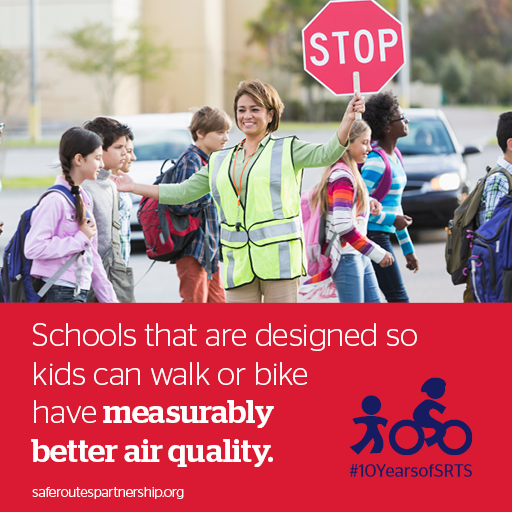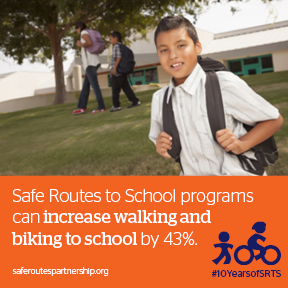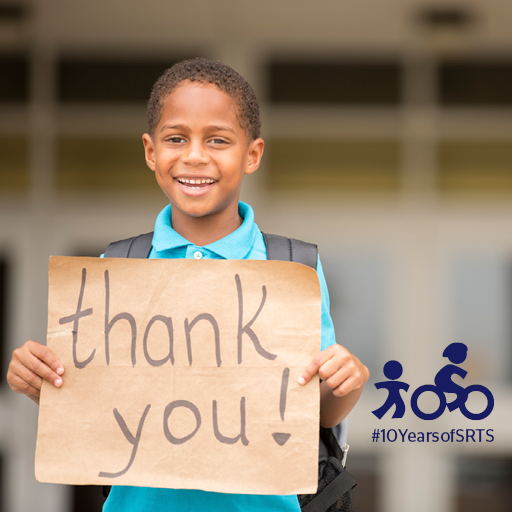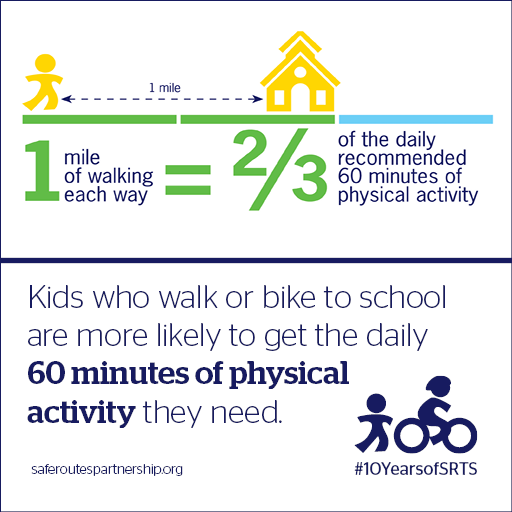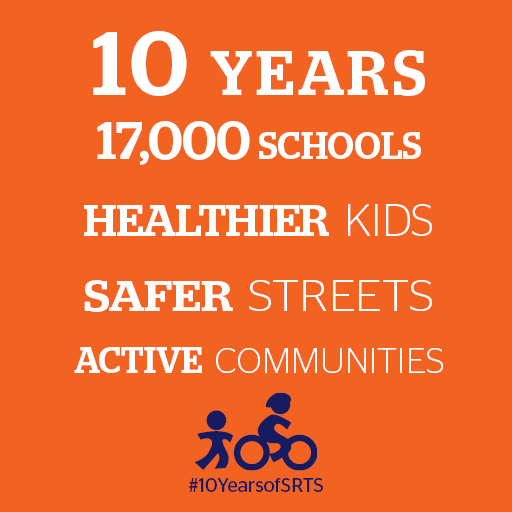 “Walking is one of the most powerful tools we have to increase physical activity and emotional well-being for kids.” These are the words of U.S. Surgeon General Dr. Vivek Murthy, who last month called on Americans to work together to make our communities more walkable for people of all ages and abilities. A few weeks later, U.S. Secretary of Transportation Anthony Foxx put out this video encouraging students and families to walk to school today in honor of International Walk to School Day. Their support comes on top of strong efforts from First Lady Michelle Obama, who supports walking school buses as part of her Let’s Move! campaign to get kids healthier and more physically active.
“Walking is one of the most powerful tools we have to increase physical activity and emotional well-being for kids.” These are the words of U.S. Surgeon General Dr. Vivek Murthy, who last month called on Americans to work together to make our communities more walkable for people of all ages and abilities. A few weeks later, U.S. Secretary of Transportation Anthony Foxx put out this video encouraging students and families to walk to school today in honor of International Walk to School Day. Their support comes on top of strong efforts from First Lady Michelle Obama, who supports walking school buses as part of her Let’s Move! campaign to get kids healthier and more physically active.
Ten years after the birth of Safe Routes to School, leaders like Secretary Foxx, Dr. Murthy, and the First Lady see a cultural shift taking place. They hear Americans demand more walkable neighborhoods and safer streets. They see local communities taking steps to reverse the rising rates of childhood obesity and decline in physical activity. They are watching as a generation of Millennials, now becoming parents themselves, are refusing to settle for the status quo of car culture and inactivity.
If you joined a walk to school this morning, you heard it too – in the exuberant voices of kids walking together through neighborhoods and arriving at school energized to begin the day. If you paid attention to social media, you saw it in the outpouring of photos and messages giving tribute to a successful walk. The demand for walkable, bikeable communities is louder than ever before.
When Deb Hubsmith spoke about passing Safe Routes to School legislation and founding the Safe Routes Partnership in 2005, she described the courage, vision, and dedication it took to convince lawmakers, schools, and families that walking and bicycling to school was a good idea. Today, the demand for Safe Routes to School and active communities stretches from rural Kentucky to Wisconsin to Humboldt County, California.
There is still a lot of work left to do. Many places, particularly low-income communities, still lack basic infrastructure like sidewalks and bike lanes, even though residents are more likely to walk or bicycle than residents of high-income communities. Plenty of lawmakers still need convincing when it comes to finding the political will to support Vision Zero, Complete Streets, and Safe Routes to School. Active transportation programs and policies are still woefully underfunded.
Today marks another record-breaking year for Walk to School Day, and the drumbeat for Safe Routes to School is growing louder. To help us celebrate these ten years and shine the spotlight on our collective achievement, share a card on social media, in your newsletter, or on your website. Click on any card to get the full size version.



